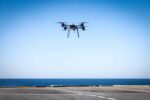Australian defense tech firm DroneShield has significantly expanded its U.S.-based research and development (R&D) operations in a strategic push to accelerate innovation in counter-unmanned aerial systems (C-UAS). The move comes amid growing global demand for advanced drone detection and defeat solutions across military and homeland security sectors.
New Virginia Facility Anchors U.S. Innovation Push
DroneShield has inaugurated a new R&D facility in Northern Virginia—a region dense with defense contractors and close to key Pentagon stakeholders. The site will serve as the company’s primary American engineering and prototyping hub, supporting the development of next-generation C-UAS platforms tailored for U.S. Department of Defense (DoD) requirements.
The expansion reflects DroneShield’s deepening integration into the U.S. defense ecosystem following several high-profile contracts with DoD entities including the U.S. Army and Air Force. The company’s CEO Oleg Vornik emphasized that proximity to end-users is critical for rapid iteration cycles and mission-specific adaptation of its modular sensor-fusion platforms.
“This facility enables us to work shoulder-to-shoulder with our U.S. partners,” said Vornik in a company release. “It accelerates our ability to prototype hardware-software integrations that meet evolving operational needs.”
Focus Areas: AI-Powered Detection, RF Sensing & Defeat Options
The expanded team in Virginia will focus on several core technology domains:
- RF Spectrum Monitoring: Enhancing passive radio frequency (RF) detection capabilities across congested electromagnetic environments.
- Sensor Fusion: Integrating EO/IR cameras, radar feeds, acoustic sensors, and RF data into unified threat pictures.
- AI/ML Algorithms: Developing machine learning models that can classify drone types by flight pattern or signal signature.
- Kinetic & Electronic Defeat Modules: Supporting integration with effectors such as jammers (e.g., DroneGun Tactical) or hard-kill interceptors.
This aligns with trends seen across NATO militaries seeking layered C-UAS architectures that combine early warning with automated engagement options—especially against small Group 1–3 drones used in swarming or reconnaissance roles.
U.S. Market Growth Drives Localization Strategy
The United States remains DroneShield’s largest market by revenue share—accounting for over half of its sales as of FY2024—and is expected to grow further amid rising procurement budgets for base protection and mobile force protection systems.
The company has previously delivered its DroneSentry-X vehicle-mounted system to the U.S. Air Force under Foreign Comparative Testing (FCT), as well as fixed-site deployments at undisclosed DoD locations under urgent operational needs contracts.
This localization strategy also supports compliance with Buy American Act provisions and cybersecurity supply chain requirements increasingly enforced by the DoD acquisition community—especially for software-defined radio (SDR)-based systems vulnerable to foreign interference risks.
Competitive Landscape: Navigating a Crowded C-UAS Market
The global counter-drone market is projected to exceed $10 billion by 2030 according to analysts at MarketsandMarkets and Janes Defence Weekly. Major players include Anduril Industries (Lattice OS), Dedrone (SmartAir), Leonardo DRS (M-LIDS), Northrop Grumman (FAAD C2 integration), and Israeli firm Rafael (Drone Dome).
DroneShield differentiates itself via cost-effective modularity—offering scalable solutions from man-portable jammers like DroneGun Mk4 up through networked multi-sensor towers like DroneSentry-C2—and its emphasis on passive detection methods that avoid active emissions detectable by adversaries.
The company also touts its proprietary AI engine “RFAI” which reportedly enables sub-second classification of drone threats based on real-time RF fingerprinting—a capability validated during NATO exercises such as CWIX 2023 in Poland.
DARPA & DIU Partnerships Signal Strategic Alignment
The expansion also positions DroneShield for deeper collaboration with innovation arms like the Defense Innovation Unit (DIU) and DARPA’s OFFSET program focused on swarming drone threats. In 2023–24, the company participated in DIU-led evaluations under the Rapid Assessment of Threat Exposure (RATE) initiative focused on urban airspace surveillance resilience.
This complements recent moves by other allied firms such as Black Sage Technologies or Echodyne who have similarly co-located near Washington D.C. to align more closely with Pentagon modernization roadmaps around Joint All-Domain Command & Control (JADC2) and contested EW environments.
Outlook: Toward Autonomous Counter-Drone Networks
The long-term vision for DroneShield includes autonomous C-UAS networks capable of real-time threat identification, prioritization, and response without human intervention—leveraging edge compute nodes deployed across forward operating bases or mobile convoys.
This would enable faster kill chains against low-cost FPV drones increasingly used by non-state actors in asymmetric warfare theaters such as Ukraine or Syria—where traditional radar-centric air defense proves insufficient due to low-RCS profiles of commercial quadcopters modified for ISR or kamikaze missions.
If successful, this evolution could see DroneShield systems integrated into broader tactical networks via Link-16 or NATO STANAG-compliant interfaces—enabling cross-domain cueing between EW assets, SHORAD batteries like NASAMS/IM-SHORAD, and kinetic interceptors such as APKWS or Coyote Block 3 UAVs from Raytheon.









